Mathematics Classes

Fractions and Decimal (MTH1)
Total # of live classes: 9
Fractions are a set of number with numbers above and below the line of division. The number above the line is called numerator while that below the line is a denominator.

Approximations and Percentage Error (MTH2)
Total # of live classes: 4
Approximations are made in mathematics from time to time while making calculations. They refer to values similar to anything, but not exactly equal, to another number.

Commercial Mathematics (MTH3)
Total # of live classes: 5
Commercial mathematics is a branch of mathematics that deals with the concepts used in businesses to manage business operations in accounting, inventory management, marketing, sales forecasting and financial analysis.

Approximations and Percentage Error (MTH2)
Total # of live classes: 8
Algebraic processes are a collection of several methods used to solve a pair of linear equations with two variables. Algebraic expressions are a combination of symbols, containing one or more numbers, variables and arithmetic operations.

Simultaneous, Quadratics and Inequalities (MTH5)
Total # of live classes: 14
Simultaneous equations are two or more unknown variables are related to each other through an equal number of equations. Inequalities describe whether equations are equal to, less than or greater than each other.
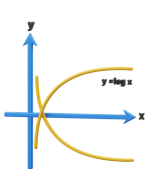
Standard Form, Indices and Logarithms (MTH6)
Total # of live classes: 12
Standard form is a way of expressing numbers that are too large or too small to be conveniently written in decimal form. It is done by writing any number between 1.0 and 10.0, multiplied by a power of 10.
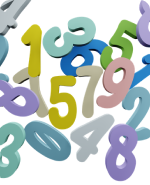
Number Base and Surds (MTH7)
Total # of live classes: 10
A number base can be described as the number of digits or a combination of digits that a system of counting uses to represent numbers.

Sets and Probability (MTH8)
Total # of live classes: 8
Microorganisms belong to an interesting class of living things. They are everywhere and invisible to the eyes. You need a magnifying lens or microscope to see them.
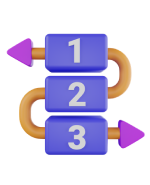
Sequence and Series (MTH9)
Total # of live classes: 9
Arithmetic progression (A.P) is a form of sequence in which each term is gotten by the addition of a common difference to the preceding one.

Variation and Modulo Arithmetic (MTH10)
Total # of live classes: 6
Variation refers to the relationship between two or more quantities. A change in one of the quantities results in a change in the other.
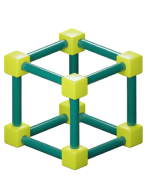
Trigonometry (MTH11)
Total # of live classes: 12
Trigonometry is an area of mathematics that deals with the relationships between the sides and angles of triangles and their calculations, particularly trigonometric functions.
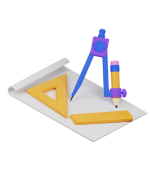
Angles of Elevation and Depression, Bearing and Plane Geometry (MTH12)
Total # of live classes: 9
Variation refers to the relationship between two or more quantities. A change in one of the quantities results in a change in the other.
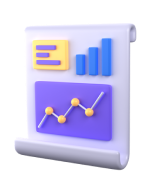
Statistics I (Ungrouped Data) (MTH13)
Total # of live classes: 7
Measures of central tendency are numbers that tend to cluster around the “middle” of a set of values. The commonly used measures of central tendency are mean, median, and mode. A measure of dispersion indicates the scattering of data.

Statistics II (Grouped Data) (MTH14)
Total # of live classes: 3
Grouping of data eliminates stress when dealing with large volume of data.

Charts and Graphs (MTH15)
Total # of live classes: 5
Graphs and charts are interesting ways of presenting data represented in tables. They help to use the results of data to predict a pattern and future trend.

Plane and Circle Geometry (MTH16)
Total # of live classes: 7
Geometry deals with the shapes, angles, dimensions and sizes of a range of objects. Plane geometry explains the structure of two-dimensional shapes like triangles, squares, rectangles and circles.

Plane Mensuration (MTH17)
Total # of live classes: 7
Mensuration deals with the size, region and density of two and three- dimensional shapes like squares, circle, cone, cylinder, rectangles, etc.

Solid Mensuration (MTH18)
Total # of live classes: 6
Solid mensuration helps to study the volume, area, height, and length of various solids. It also helps to calculate the surface area and surface volume of different solids.
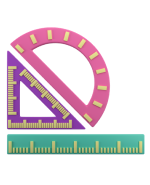
Coordinate Geometry (MTH19)
Total # of live classes: 8
Coordinate geometry helps to measure the distance between two points using their coordinates, find the mid-point of a line and much more.

Matrix (MTH20)
Total # of live classes: 8
Matrix is a rectangular arrangement of numbers or symbols in rows and columns. Individual items in a matrix are called elements or entries.

Vectors (MTH21)
Total # of live classes: 7
Vector is an object that has both a magnitude and a direction. Geometrically, it is a directed line segment, whose length is the magnitude of the vector and with an arrow indicating the direction.

Logic, Mapping and Function
Total # of live classes: 8
Logic is the study of reasoning. It investigates the level of correctness of the reasoning found in arguments.

Remainder theorem, Factor theorem and Partial Fractions (MTH23)
Total # of live classes: 6
Remainder and factor theorem help to find factors of a polynomial without using long division or other conventional methods of factoring.

Binary Operations (MTH24)
Total # of live classes: 4
Basic mathematical operations (addition, subtraction, multiplication and division) are performed on two numbers and are known as binary operations. Binary means ‘two’.

Permutation and Combination (MTH25)
Total # of live classes: 6
Permutation is an act of arranging the objects or numbers in order while Combinations are the way of selecting the objects or numbers from a group of objects or collection, in such a way that the order of the objects does not matter.

Differentiation (MTH26)
Total # of live classes: 9
Differentiation is a process of finding the derivative, or rate of change, of a function. There are various methods of differentiation in Mathematics.

Integration (MTH27)
Total # of live classes: 7
Integration is a method of adding up the parts to find a whole. It is the opposite of differentiation, where functions are reduced to parts.
 +234 915 886 8888
+234 915 886 8888